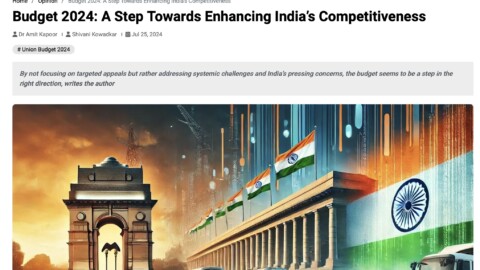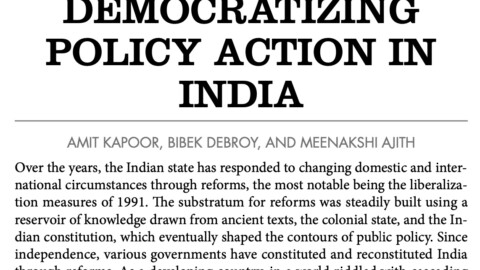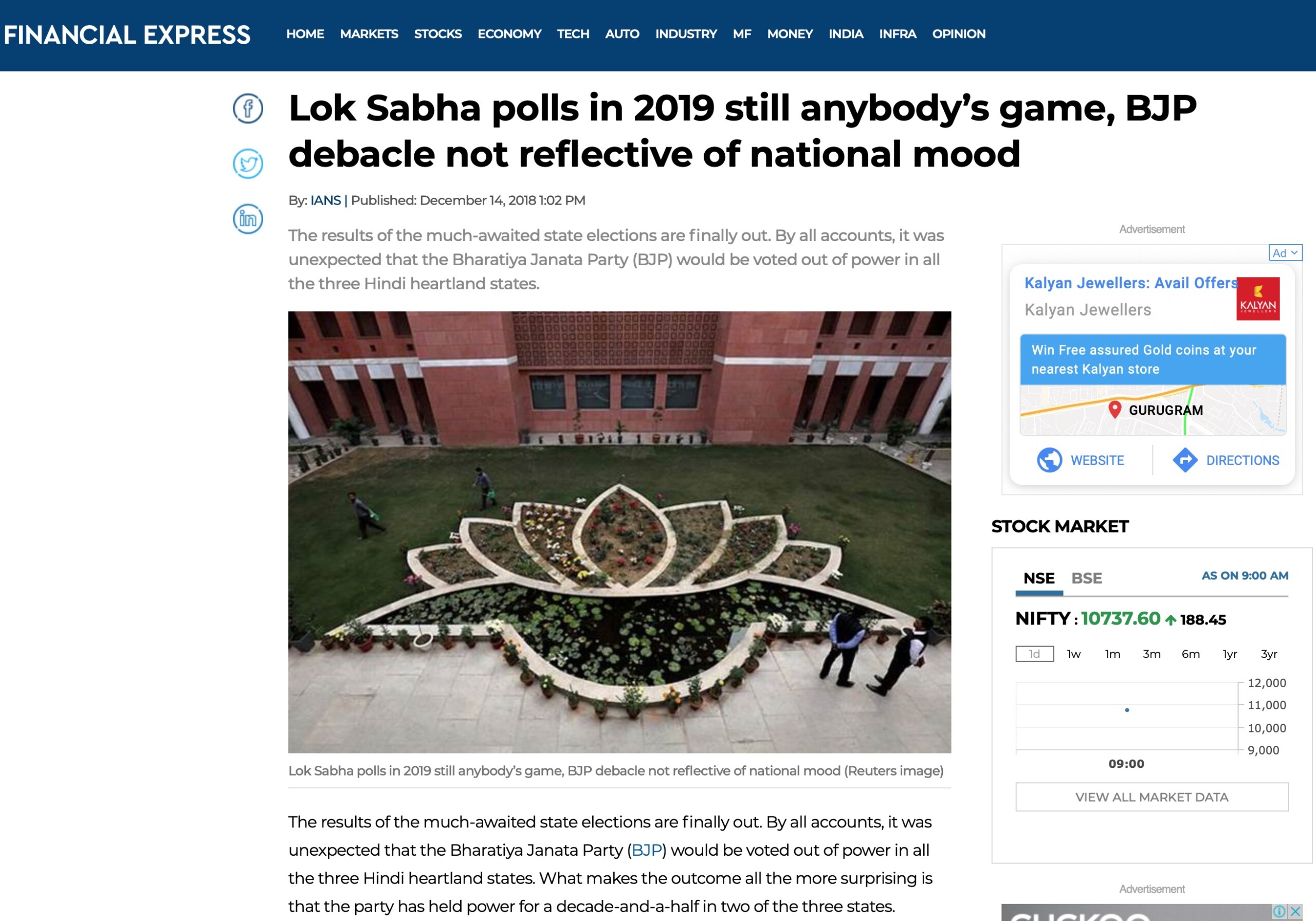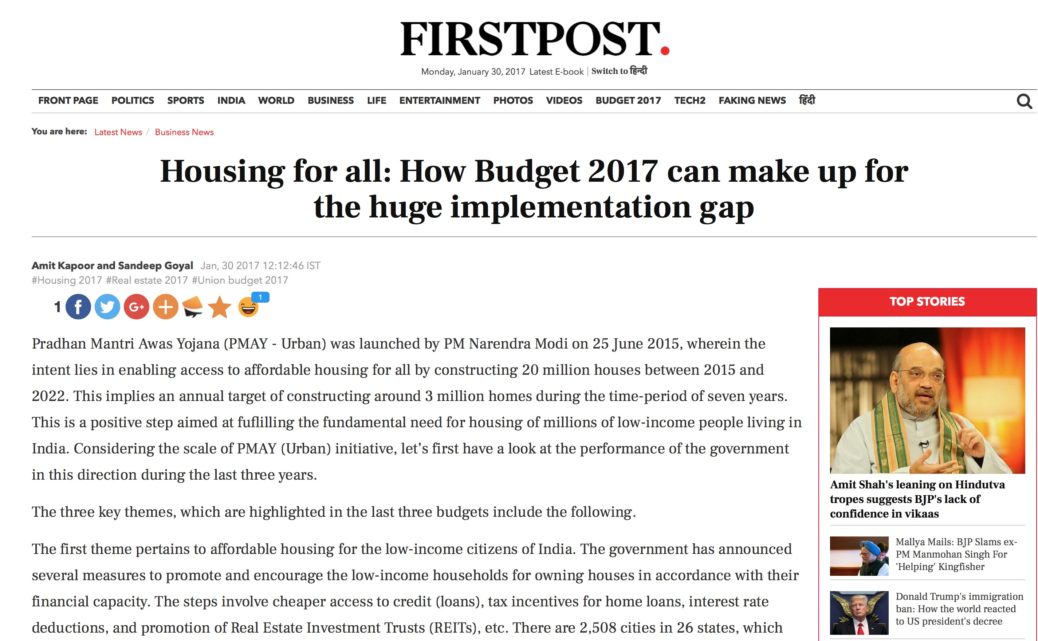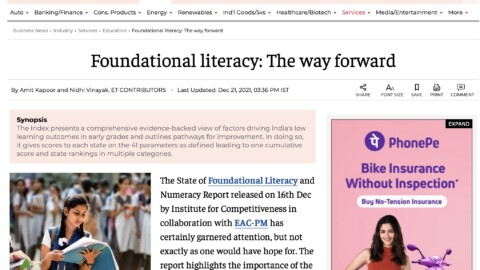The agriculture sector in India employs more than 90 million people and contributes 15.4 percent gross value addition (GVA) to the Indian economy. Agriculture has been one of the key focus areas during successive Union Budgets. The performance of the agriculture sector has remained inconsistent due to low productivity that is driven by lack of access to basic inputs as well as macro-environment issues like drought, flood, etc. This is accentuated in the poor socio-economic condition of the farmers. It is a sad state of affairs for India having an average of more than 5,000 farmers committing suicide in a year (NCRB statistics). This reflects upon the gap between policy making and implementation.
The majority of the farmers lack access to irrigation (46 percent of the cultivated land is under irrigation) as well as systemic information regarding the nutrient level of the soil and proper use of fertilizers. The last two budgets have seen increased focus and attention by the government on these two basic inputs of agriculture – soil and water. Following steps have been taken by the government in this direction:
1) Improving the soil fertility and adoption of organic farming by pushing the Soil Health Card Scheme and Paramparagat Krishi Vikas Yojana
2) Enabling access to micro-irrigation by giving the push to the initiatives like Pradhan Mantri Krishi Sinchai Yojana (PMKSY), Accelerated Irrigation Benefits Programme (AIBP), leveraging MGNREGA for water conservation measures, and Long Term Irrigation fund.
Besides the focus on soil and water initiatives, the government realised the need for insuring the risk of crop failures and launched ‘Prime Minister Fasal Bima Yojana (PMFBY)’ to provide crop insurance to the farmers. According to the release by the Ministry of Agriculture in December 2016, around 3.67 crore farmers have been covered during the Kharif season in 2016-17, an increase of 18.6 percent from the corresponding period in 2015-16. This is considered to be a satisfactory progress. However, the majority of the beneficiaries are the farmers, who have taken loans. The necessary steps are required to bring the other farmers, who have not taken loans, under PMFBY due to their exposure to greater financial risk.
One aspect, which stands out from the steps taken in the last two budgets is the extensive focus on enhancing the access to inputs like soil, water, and fertilizers as a part of the green revolution. No doubt, these are the essential factor conditions for enhancing the growth of agriculture. However, there is a need to shift focus from basic input oriented factors to other factors like technology, allied income opportunities, etc., which can enhance the productivity levels of agriculture sector as well as make it a more sustainable and attractive sector for the youth.
The Budget for 2017-18 should focus on the following areas.
Cultivation of High-Value Crops
The budget should take into consideration the international market mechanism, demand-supply dynamics and promote the cultivation of high-value crops like pulses, oilseeds, etc. by offering better market mechanism along with capacity building initiatives. Traditionally, the majority of the farmers in India focus on water-intensive crops like rice, wheat, and sugarcane, etc. The shift in orientation towards the cultivation of high-value crops will minimize the demand-supply gap for certain crops where India is dependent on imports, optimize the need for basic inputs like water for irrigation especially in the semi-arid regions as well as lead to better returns for the farmers.
Cashless Transactions
There is a need to encourage greater adoption of cashless transactions across the agriculture value-chain like purchasing the seeds, and fertilizers, etc. as well as transferring the benefits and incentives to the farmers (like direct benefit transfer of agricultural subsidies).
Sustainable Income for Farmers
The budget needs to encourage the sustainable income for farmers by enabling access to wider market connect as well as setting up an ecosystem for the promotion of different allied activities besides farming. The government has announced projects like ‘Pashudhan Sanjivani’ (animal wellness initiative and issuance of animal health cards), ‘E-Pashudhan Haat’ (e-market setup to connect farmers and breeders), and setting up National Genomic Centre for the development of indigenous breeds. However, these initiatives need better enforcement, tracking, and control to yield the desired outcomes for the farmers and motivating youth to enter the agriculture sector.
Focus on R&D, Technology, and Innovations
The complexity of the agricultural value-chain demand continuous focus on R&D, technology integration, and product and process based innovations. The budget should provide ecosystem support and incentivise the universities and companies that are willing to focus on R&D and innovations in the agriculture sector. Similar focus is required in the deployment of IT and technology based solutions for procurement, development of high-quality seeds, efficient modes of irrigation, better farming practices (sowing, crop rotation, harvesting, etc.), and online platform to connect farmers and consumers. The previous budget announced schemes like e-mandis and e-procurement setup. However, there is a need for a greater push in the current budget towards the same.
Budget 2017-18 is expected to make a push beyond input factors towards streamlining the overall value-chain of the agriculture sector from procurement to delivery by enabling better processes, capacity building of the farmers, flow of information and technology interface.
The article was published with First Post on January 31, 2017.

